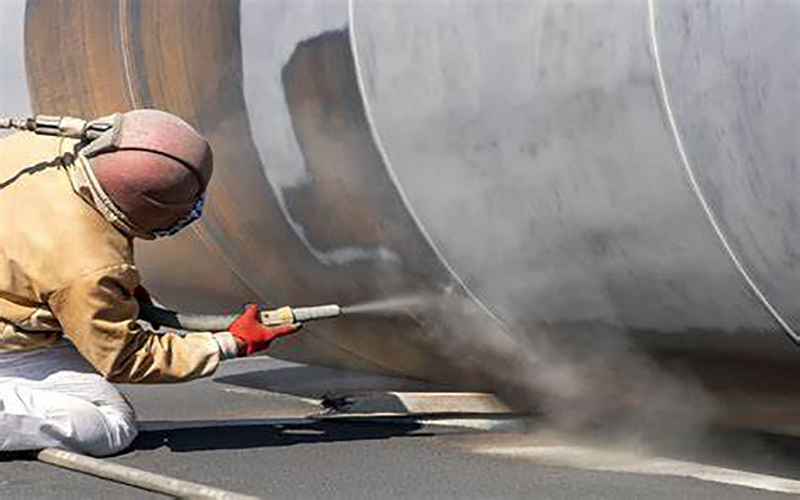Reasons to go for carbon conductive coating
The carbon conductive coating are a versatile solution for applications requiring electrical conductivity. From electronics to automotive components, carbon coatings are enabling new product designs across many industries. But with so many coating options available, how do you determine if a carbon coating is the right choice? This article explores the key benefits that carbon coatings provide, like corrosion resistance, flexibility, customizable properties and more. We’ll look at why carbon has become a leading conductive material and the many reasons why switching to a carbon coating could offer your application or product substantial advantages.
1. Electrical Conductivity
The main function of a carbon conductive coating is to imbue electrical conductivity into surfaces that are typically non-conductive. Carbon coatings achieve this through the use of minuscule carbon particles incorporated within the coating formulation. These carbon particles are micron sized or smaller, measuring just billionths of a meter across. However, despite their tiny scale, the carbon particles have a big effect – they form a conductive network throughout the cured coating. This network allows free electrons to flow freely through the material on which the coating is applied. By introducing an electrically conductive path, carbon coatings enable applications to dissipate static electric charges safely or transmit electric signals and power through insulating substrates. It is this property of imparting conductivity that makes carbon coatings so useful.
2. Corrosion Resistance
Carbon conductive coatings provide both electrical conductivity and corrosion protection. The carbon particles that make the coating conductive also give it corrosion resisting properties. Carbon particles are embedded throughout the coating and form a protective barrier between the substrate material and environmental factors like moisture, chemicals, salt water or other corrosive substances. This is important because many substrates that need conductivity, like metals, plastics and composites, can be damaged or degraded when exposed to corrosive conditions over time. The carbon particles block corrosive agents from reaching and reacting with the substrate surface. This prevents corrosion from occurring, even in very harsh environments. By shielding the underlying material, carbon coatings can eliminate costly corrosion issues and extend the functional life of components subjected to demanding outdoor or industrial conditions.
3. Flexibility
Carbon coatings are highly flexible compared to traditional metallic coatings. Metallic coatings like tin, silver or nickel are rigid by nature and don’t adapt well to moving or flexing parts. Over time, the rigid metallic coating can develop cracks or peel away from the substrate surface especially in areas that experience repeated movement. In contrast, carbon coatings maintain excellent flexibility due to the inherent properties of the carbon particles and binding resins used. The carbon particles allow the coating to flex and bend along with the underlying substrate material without causing damage to the coating layer. This makes carbon coatings ideal for applications that will be subjected to frequent flexing, bending, vibration or other motions. The coating can be easily applied to complex curved surfaces and intricate component designs without cracking. Even when flexed, the carbon coating continues conducting electricity along the substrate.
4. Cost Effectiveness
At first glance, the upfront costs of carbon coatings may seem more expensive when compared to traditional paints or other coating types. However, it’s important to consider the long-term cost savings and return on investment that carbon coatings provide due to their exceptional durability and lifespan. Unlike other coating solutions, carbon coatings will not degrade over time when exposed to weathering, chemicals, corrosion or other environmental factors. This means there is no need for reapplication, repair or early replacement of parts. For applications that demand a coating lasts for decades without failure, the high initial performance of carbon coatings eliminates long-term costs associated with corrosion prevention and premature coating replacement. When you factor in savings over the full lifetime of the product, carbon coatings actually end up being very cost effective compared to alternatives that require more frequent reapplication.
5. Design Freedom
Carbon coatings allow for more design freedom than metallic coatings and do not restrict substrate material selection. They can be applied to plastics, composites, ceramics, wood and more. This opens up new possibilities for combining materials in multi-material designs and prototypes. It also allows existing non-conductive components to be rendered conductive without redesigning the part out of a metal.
6. Customizable Properties
The properties of carbon coatings can be customized by adjusting the carbon particle type, size, concentration, binder resin and application process. This allows the coating to be tailored to the specific conductivity, flexibility, adhesion, hardness/abrasion resistance and other performance requirements of the application. Properties like surface resistivity can be precisely controlled.
7. Environmentally Friendly
Many carbon coating materials are solvent-free, contain no VOCs, and are thermally cured without requiring high heat. They do not emit harmful fumes during curing like some paints. Carbon particles themselves are also non-toxic. Overall, carbon coatings have a much lower environmental impact than traditional paints or metallic coatings containing heavy metals. They are suitable for applications needing an eco-friendly conductive solution.
8. Wide Temperature Range
Once cured, carbon coatings maintain their conductivity and other properties over a wide temperature range, often from -50°C to +300°C. This makes them suitable for applications facing temperature cycling, high/low operating temperatures or heat generated by electrical loads. The coating will not degrade or lose conductivity like other materials might at extreme temperatures.
9. Aesthetic Options
Carbon coatings are available in various colors and finishes to match aesthetic requirements. Glossy, textured and colored options allow the coating to be customized for visual appeal in addition to its functional performance benefits. Invisible clear coatings are also available for applications where conductivity is needed without affecting the appearance of the substrate material.
10. Ease of Application
Carbon coatings can be applied using standard industrial painting methods like spraying, brushing, rolling or dip coating. No special equipment is required. This makes them easy to integrate into existing manufacturing processes. Some advanced application techniques like plasma spraying or vapor deposition are also used to apply carbon coatings depending on the product design and performance criteria.
Conclusion
A carbon fiber finish coat provides an excellent combination of electrical conductivity, corrosion resistance, design flexibility, customizable properties and ease of application. They are a smart choice for applications in industries like automotive, aerospace, consumer electronics, medical devices and more – wherever static dissipation, EMI/RFI shielding or signal transmission is required. Their benefits outweigh traditional metallic or paint-based coating alternatives in many application scenarios.



